Stephania erecta, also known as the Crown Root, is a perennial vine that belongs to the Menispermaceae family. It is native to tropical regions of Indochina and is a unique, and rare popular ornamental plant.
It produces long, slender stems that can grow up to 2 meters in length and features heart-shaped leaves with a glossy, green surface, from a potato-like bulb called a caudex. While this plant is considered mildly difficult to care for, by following the care guide below, you can enjoy a very unique addition to your house plant collection.

What is Stephania Erecta
Stephania Erecta, also known as Stephania pierrei, is a rare and collectible plant belonging to the Menispermaceae botanical family. It is native to the deciduous forests of Cambodia, Laos, Thailand, and Vietnam.
This plant's main attraction is its large, woody bulb called a caudex. An impressive feature, this large bulb that looks like a potato and can reach up to seven inches in diameter. From the caudex, several long, slender stems grow, and they are capable of reaching up to three feet tall. The stems are topped by green, shield-shaped leaves about two inches in diameter, which gives this plant its unique and intriguing appearance.
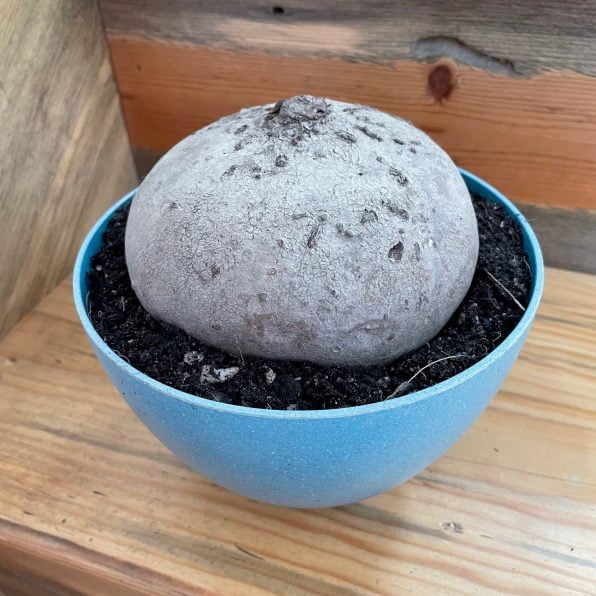
The plant gets its name from its erect stems and its genus, which is named after the Greek word “stephanos,” meaning crown. The caudex, or potato-shaped bulb, serves as a water storage organ that allows the plant to survive during long periods of drought. S.erecta is regaining in popularity, but it is still considered a rare collectible plant due to over-harvesting and environmentally impacted forests.
Beginning its growing journey your bulb will pass through the sprout stage, followed by the stem and leaf stage. This plant is a deciduous plant, meaning it drops its leaves in the winter, so be prepared for this to more than likely happen.
A bit of patience will be needed when waiting for the bulb to wake up and just so you are aware it takes up to 20 years to mature.
Stephania Erecta at a Glance:
| Common Name: | Stephania Erecta, Binh Voi |
| Botanical Name: | Stephania pierrei |
| Plant Type: | Deciduous perennial |
| Size: | Bulb can be up to 7 inches, and the stems can grow to 3 feet in height |
| Light: | Dappled light during sprouting stage, bright indirect light thereafter |
| Soil: | Well-draining cactus type soil mix |
| Water: | Allow the top half of the soil to dry out in between waters, also when it's blooming or in its dormant season |
| Vulnerabilities: | Direct sun, overwatering, poorly draining soil, pests |
| USDA Growing Zones: | 10a – 11b |
How to Care for Stephania Erecta
Although this plant is considered a moderately difficult plant to care for, following these guidelines can help your S. erecta thrive and grow into a healthy plant. Soil, water and proper lighting, pruning and propagation are all covered below.
Soil Guide for Stephania Erecta
The soil mix used for Stephania erecta is crucial for its growth and survival. It requires a well-draining, gritty and sandy soil mix that won't hold onto water and cause the bulb to rot. A cactus potting mix is an ideal choice as it is designed to provide excellent drainage while also retaining enough moisture to keep the plant hydrated.
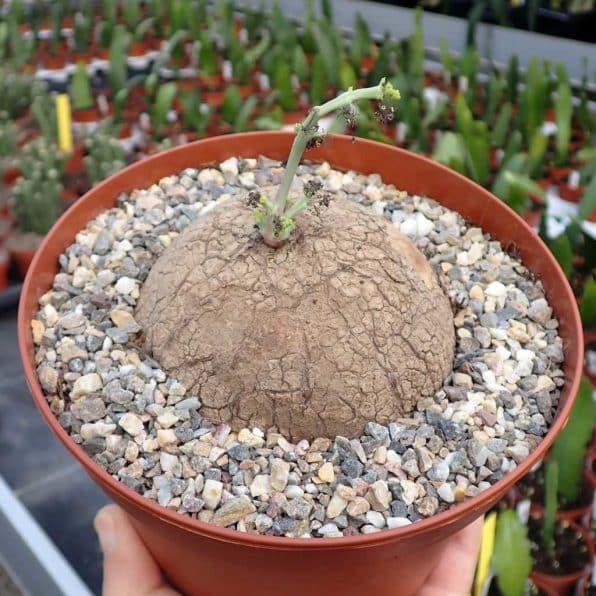
It's important to ensure that the potting mix is not too compacted, as this can reduce the drainage capacity and prevent the plant from accessing the nutrients it needs. Mixing in perlite or sand can help improve drainage and aerate the soil.
When potting Stephania erecta, it's essential to choose a pot with good drainage holes to allow excess water to escape. Adding some larger gravel at the bottom is a good method for assuring that complete drainage away from the bulb is achieved. Also, the container should be slightly larger than the bulb to avoid overcrowding and to allow room for the roots to spread out.
The depth of the bulb is very important to keep the caudex from developing basal rot. Bury the bulb pointy side up and halfway out of the soil mixture.
How Often to Water Stephania Erecta
Stephania erecta is a tropical plant that prefers consistently moist soil, but not waterlogged. When watering your Stephania erecta, it is important to find the right balance between providing enough moisture to the plant and avoiding overwatering.
The frequency of watering will depend on several factors, such as the plant's size, the type of soil it's planted in, and the temperature and humidity of its environment. In general, it is recommended to water the plant thoroughly when the top inch of soil feels dry to the touch. This may mean watering once or maybe twice a week, depending on the conditions in your home or growing space.

When watering, use room-temperature water and avoid letting the plant sit in standing water. Drain excess water from the saucer or pot after watering to prevent root rot. A good method of watering to use is flushing the soil in the sink or outdoors and allowing the water to completely run out.
Stephania Erecta Lighting Needs
Stephania erecta needs to have 4-6 hours of bright, indirect sunlight daily. Avoid direct sun to prevent the caudex and the leaves from sunburning.
As with any plant, it's important to monitor the growth and health of your Stephania erecta to ensure it's receiving the right amount of light. Adjust the placement of the plant as needed and observe how it responds to changes in light to find the optimal growing conditions.

If you notice any changes in your plant, adjust the lighting frequency or intensity. This plant can take an early morning sun or late evening sun directly but monitor it closely to avoid sun scorching your plant.
Stephania Erecta Temperature & Humidity
Stephania erecta prefers warm and humid environments. It thrives in temperatures between 65°F and 80°F (18°C and 27°C) and requires high humidity levels of around 60-80%.
If the temperature drops below 50°F ( 10°C ), the plant may begin to suffer, and prolonged exposure to colder temperatures can be fatal. It's important to keep your Stephania erecta away from drafts and cold air conditioning vents.
To maintain the required humidity levels, you can mist the plant's leaves regularly with water or use a humidifier to increase the moisture in the air. You can also place a tray of water near the plant, which will evaporate and increase the humidity in the immediate vicinity.
Fertilizing Your Stephania Erecta
S. erecta does require a lot of fertilizing and can be fertilized once a month, during its summer growing season, less frequently in the fall, and avoid fertilizing during its winter dormancy stage.
Stephani Erecta Pruning Method
Stephania erecta does not require extensive pruning. However, you can trim back any dead or yellowing leaves as needed to maintain the plant's appearance and overall health.
If your Stephania erecta is becoming too leggy or sprawling, you can pinch back the stems to promote bushier growth. Simply use your fingers or a clean pair of scissors to snip off the tips of the stems, taking care not to remove too much foliage at once.
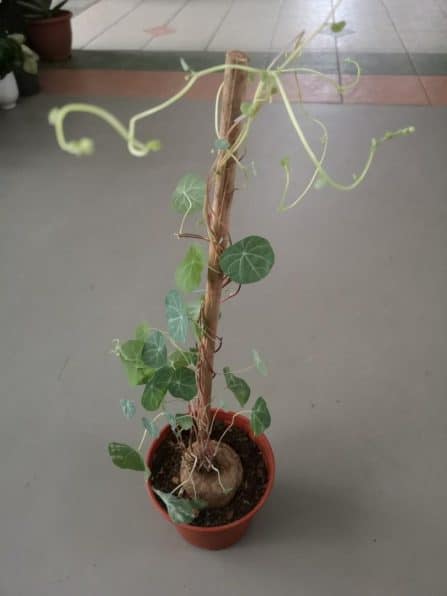
Pruning can also be useful for controlling the size of your Stephania erecta plant. If it's outgrowing its space, you can trim back the stems to keep it more compact.
Overall, pruning is not necessary for the health of your Stephania erecta plant, but it can be helpful for maintaining its appearance and controlling its growth. Just be sure to use clean, sharp tools to avoid damaging the plant, and take care not to remove too much foliage at once, as this can stress the plant.
Stephania Erecta Propagation
Propagating Stephania erecta can be time consuming and moderately difficult.
- soak the seeds in water for 24 hours in a warm, dark place
- plant them in a succulent soil mix in a pot with drainage holes
- burying them about 1/4 inch deep, watering them in
- cover the pot with a clear plastic bag, and place them in indirect sunlight at a minimum temperature of 64℉
- keep the soil moist by watering every two weeks
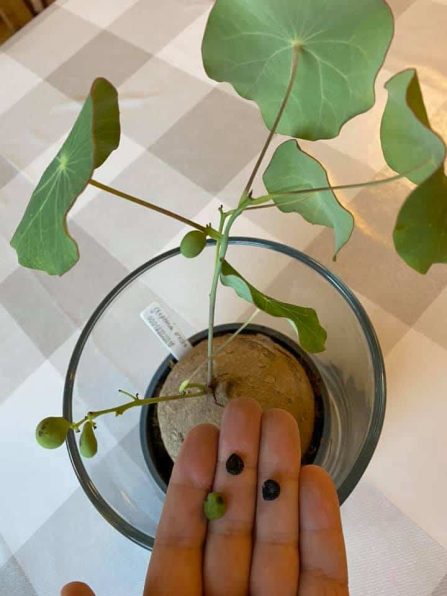
It can take up to five months for the seeds to germinate, and once the seed produces its second leaf, the bag can be removed from the pot.
Similar Stephania Erecta Plant Varieties
Similarities to a unique plant like Stephania erecta are few and far between, but here are a couple of caudex plants that are equally as unique and beautiful.
- Dioscorea elephantipes (Elephant's Foot): This plant, also known as the Hottentot Bread, is native to South Africa and has a large, round caudex that can grow up to 3 feet wide. It produces long vines with green, heart-shaped leaves and small, cream-colored flowers.
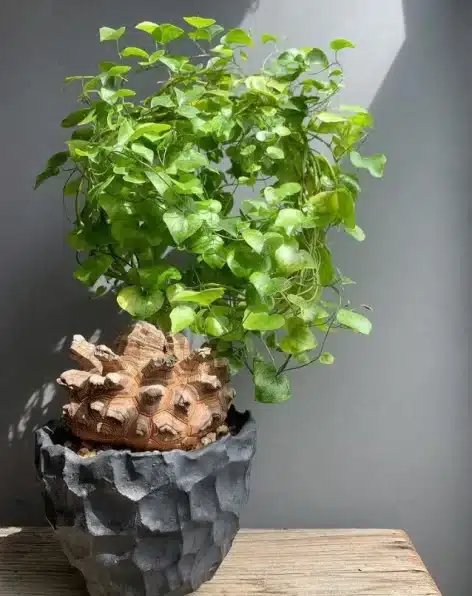
- Adenium obesum (Desert Rose): Native to Africa and Arabia, the Desert Rose has a smooth, swollen caudex that can grow to be quite large. It produces beautiful pink, red, or white flowers in the summer and has small, fleshy leaves that fall off during the plant's dormant period.
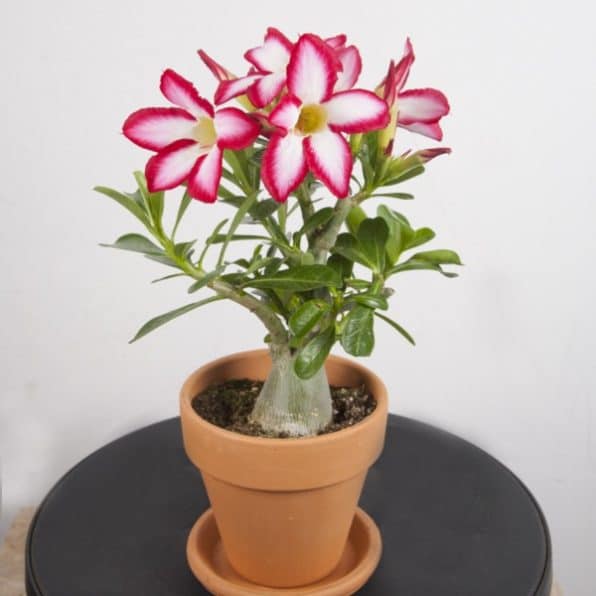
Common Problems with Stephania Erecta
Despite being a relatively low-maintenance plant, Stephania erecta can sometimes experience problems. Here are some common issues to watch out for and how to address them:
Growing
Some common growing problems with Stephania Erecta include:
- Root rot: If the soil is kept too wet or the pot doesn't have adequate drainage, the plant's roots can become waterlogged and begin to rot. To prevent this, make sure the pot has drainage holes and allow the soil to dry out slightly between waterings.
- Leaf drop: Stephania erecta may drop leaves if it is exposed to sudden changes in temperature, humidity, or light levels. It may also drop leaves if it is overwatered or underwatered. Try to maintain consistent growing conditions and adjust watering as needed.
- Pest infestations: Mealybugs, spider mites, and scale insects are common pests that can affect Stephania erecta. Use an insecticidal soap or neem oil to control infestations, and regularly inspect your plant for signs of pests.
- Basal rot: If the tubers become soft or mushy, it may be a sign of rot. This can be caused by overwatering or fungal infections. To prevent tuber rot, make sure the soil is well-draining and avoid overwatering.
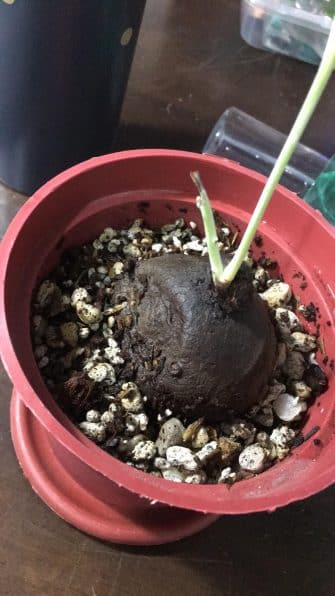
Diseases
There are no known diseases that specifically target Stephania erecta. However, like any plant, it can be susceptible to fungal or bacterial infections if it is exposed to pathogens. Additionally, overwatering can create conditions that promote the growth of root rot or other soil-borne diseases.
To prevent disease, it's important to maintain good growing conditions and avoid exposing the plant to sources of infection, such as contaminated soil or water.
Pests
Stephania erecta care includes dealing with the common houseplant pests. Some of the most common pests include:
- Mealybugs: These small, white insects can be found on the leaves and stems of the plant. They feed by sucking sap from the plant and can cause stunted growth and yellowing leaves.
- Spider mites: These tiny insects can be identified by the fine webbing they produce on the plant. They feed on the plant's sap and can cause yellowing leaves and stunted growth.
- Scale insects: These insects can appear as small, raised bumps on the stems and leaves of the plant. They feed on the plant's sap and can cause the yellowing and wilting of leaves.
- Thrips: These small, winged insects can cause damage to the plant's leaves by sucking sap and causing small, white, or brown spots to appear on the leaves.
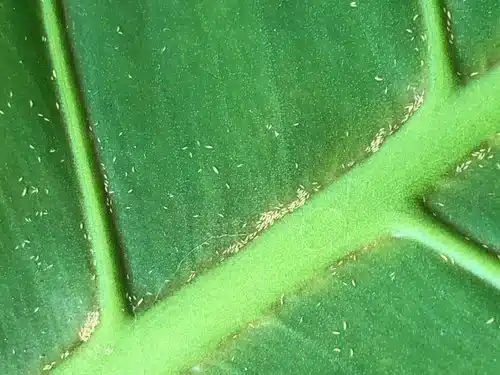
To prevent or control pest infestations, it's important to regularly inspect your plant for signs of pests and treat it with insecticidal soap or neem oil if any of these pests are detected.
Other Things to Know About Stephania Erecta
You can remove and store your Stephania bulbs in the winter, by gently removing them from their pots and storing them in mesh bags. The Stephania caudex needs to be stored in a cool well-ventilated space until you are ready to re-pot them.
FAQs
Where to buy Stephania Erecta?
Stephania erecta can be difficult to find for sale, as it is not commonly cultivated. However, there are some specialty nurseries and online plant retailers that may carry this plant. Here are a few options:
- Etsy: Many independent sellers on Etsy offer Stephania erecta for sale, although availability may vary depending on the seller.
- Rare Plant Shop: This online retailer specializes in rare and unusual plants, and occasionally offers Stephania erecta for sale.
- Logee's: Logee's is a well-known plant retailer that offers a variety of tropical plants, including Stephania erecta.
- Plant Delights Nursery: This North Carolina-based nursery offers a variety of unusual and hard-to-find plants, including Stephania erecta.
It's worth noting that due to the rarity of this plant, it may be more expensive than other more common houseplants. Additionally, when purchasing plants online, be sure to research the seller and read reviews before making a purchase to ensure that you are getting a healthy and high-quality plant.
Is Stephania Erecta hard to grow?
Stephania erecta can be considered a moderately difficult plant to grow. While it is not overly finicky, it does have specific care requirements that need to be met in order for it to thrive.
One of the biggest challenges with growing Stephania erecta is providing the right growing conditions, particularly when it comes to temperature and humidity.
The plant prefers warm, humid conditions and can be sensitive to temperature fluctuations, so it may not do well in homes with inconsistent heating or cooling. Additionally, it can be prone to root rot if the soil is kept too wet, so it's important to provide well-draining soil and not overwater the plant.
Another potential challenge with growing Stephania erecta is sourcing the plant. As it is not commonly cultivated, it may be difficult to find for sale, and when it is available, it may be more expensive than other more common houseplants.
Is Stephania Erecta rare?
Yes, Stephania erecta is considered a rare plant. It is not commonly cultivated and can be difficult to find. The combination of its rarity and unique appearance has made it a sought-after plant among collectors and enthusiasts.
Is Stephania Erecta toxic?
Yes, Stephania erecta is considered toxic to humans and pets if ingested. The plant contains several alkaloids, including aristolochic acid, which can cause kidney damage and other serious health issues if consumed. Therefore, it is important to keep the plant out of reach of children and pets and to wash your hands thoroughly after handling the plant. If you suspect that someone has ingested part of the plant, seek medical attention immediately.

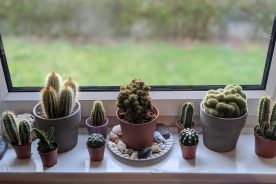
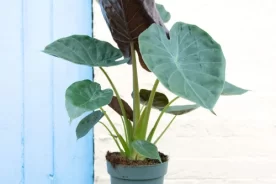
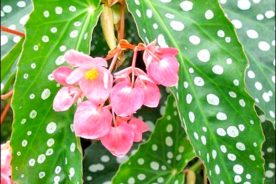

No Comments